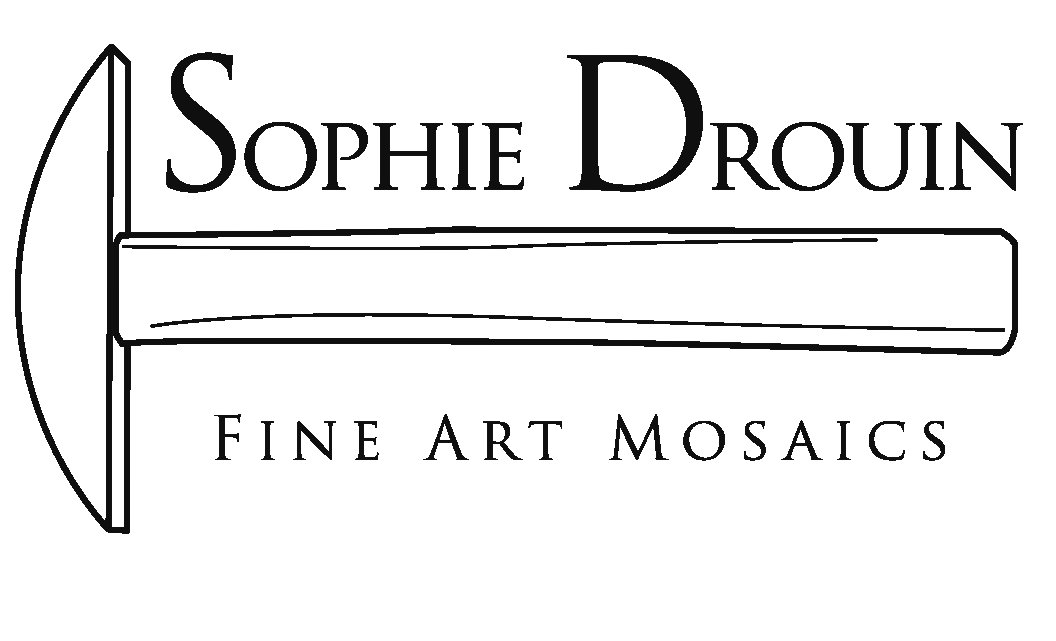Dalle de Verre
“Dalle de Verre” is a French term that literally means “slab of glass”. It is the invention of the artisanal mosaic glassmaker Albertini in France in the 1920s, in response to the wish of stained glass artists of the time to be able to work with texture and dimension as well as colour. Today it is still made near Paris by the descendants of the original Albertini, as well as by Blenko in Milton, West Virginia and by Kokomo (purveyors to Tiffany Glass) in Indiana in the United States. The slabs from all makers are rectangular, measuring more or less a foot square and an inch thick, and weigh approximatively 8 pounds each. Besides its use in stained glass, this material can also be included in mosaic as an alternative to “transparenti” smalti, or it can be combined with mosaic using a special technique that allows the glass to poke through both top and bottom layers of a slab of reinforced concrete, to which mosaic is added after the concrete has set. The resulting decorated slab of concrete can by set in a stone or metal pedestal as a free-standing sculpture, or in can be inserted or hung in a window space. Combining the translucence of dalle de verre with the warm texture of mosaic makes for an ever-changing work of art that responds to the daily and seasonal changes of light ratio inside and outside a home’s windows.












